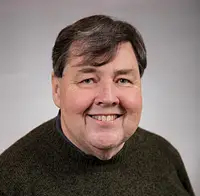Presently, chronic pain is giving more people severe discomfort on a daily basis. In fact, the NIH reports that 76.2 million Americans experience pain lasting at least 24 hours each year. Hence, the number of prescriptions written for pain medicine is astoundingly high. Namely, opioid drugs like morphine are used to block the pain sensations. Though similar, hydromorphone vs. morphine differences are important to know.
If you need morphine addiction rehab in Portland, call us today at 866.262.0531.
Similarities Between Morphine and Hydromorphone
First, hydromorphone and morphine are both considered opioid analgesics. To clarify, they’re drugs that relieve pain by stopping some nerve receptors in the brain. Generally, they’re both taken several times daily with an average half-life of two hours. Indeed, fast-acting narcotics make patients feel pleasant and comfortable. However, morphine and hydromorphone share some adverse effects, such as:
- Stomach cramps and nausea
- Dizzy spells and fainting
- Swelling of the face and throat
- Dry mouth and swallowing trouble
- Sweating and dehydration
- Extreme fatigue and blackouts
- Skin irritation and redness
Further, taking either morphine or hydromorphone long-term can damage organs. In detail, both opioids can cause respiratory depression in the lungs and make breathing difficult. Likewise, they’re linked to kidney, liver, and heart problems over time. Equally, narcotics are highly addictive as the body builds up a tolerance. Thereupon, individuals must enter a morphine or hydromorphone addiction rehab program to prevent overdose.
Differences Between Hydromorphone vs Morphine
Of course, morphine and hydromorphone are hardly identical drugs. For example, morphine derives naturally from the opium poppy plant. Actually, scientist Friedrich Serturner first extracted it in 1803. In contrast, hydromorphone is semi-synthetic. It is a derivative of morphine that first appeared in 1922. Frequently, hydromorphone is sold as Dilaudid, whereas morphine has several names like Roxanol.
As such, hydromorphone is stronger than its natural source. Markedly, one milligram of hydromorphone equals around 10 milligrams of morphine. Often, morphine is less expensive than brand names for hydromorphone. Moreover, morphine comes in more drug forms. For instance, you can get an injection of morphine into the muscle and under the skin. Another hydromorphone vs morphine difference is their availability in slow release forms.
Signs That You Need Opioid Addiction Treatment
It can be difficult to tell if you or a loved one has an addiction to opioids. However, there are certain signs and symptoms that may indicate a problem. If you notice any of the following, it may be time to seek opioid addiction treatment:
- Using more of the drug than intended or for purposes other than what it was prescribed for
- Unsuccessful attempts to quit or reduce drug use
- Experiencing withdrawal symptoms when not using the drug
- Spending large amounts of time obtaining, using, or recovering from the effects of the drug
- Neglecting responsibilities at work, school, or home in favor of drug use
- Continuing to use the drug despite negative consequences such as relationship problems or financial difficulties
If you or someone you know is exhibiting these signs, don’t hesitate to seek help. Opioid addiction is a serious problem, but treatment is available and can be successful. With the right help, you or your loved one can recover and live a healthy, drug-free life.
High-Quality Opioid Addiction Rehab at Crestview Recovery
Have you lost control of hydromorphone or morphine use? Then, Crestview Recovery has evidence-based solutions to quit effectively. Uniquely, our Portland treatment center offers individualized treatment in the beautiful Pacific Northwest. In effect, our clients spend up to 90 days in a relaxing, welcoming setting surrounded by fun activities like skiing. Plus, we accept most insurance and have payment assistance to cover costs easily. Our top rehab services include:
Cognitive-Behavioral Therapy
Cognitive-behavioral therapy (CBT) helps people identify and modify irrational thoughts, behaviors, and emotions related to substance use. CBT focuses on changing the unhealthy patterns of behavior associated with substance use while also teaching relapse prevention skills.
Holistic Drug Therapy
Holistic drug therapy takes into account the whole person, addressing all aspects of a person’s life including physical, mental, and emotional health. By taking a holistic approach to addiction treatment, individuals can not only address the root causes of their substance use, but also create a sense of balance and well-being that will help them stay sober.
Mindfulness Meditation Therapy
Mindfulness meditation therapy involves learning to mindfully observe thoughts, feelings, and behaviors without judgment. In this type of therapy, individuals learn to become aware of the triggers for their addictive behavior and practice responding in different ways. Through mindfulness meditation techniques such as breathwork, visualization exercises and body scanning, individuals learn to recognize and manage cravings.
Group Therapy
Group therapy involves a gathering of individuals with similar struggles or diagnoses coming together for support and guidance. It focuses on growth, understanding, and insight in order to foster change. It provides a safe space where participants can share their experiences, thoughts, and feelings without fear of judgment.
Take Action Before Things Get More Dangerous
Don’t risk becoming a statistic on opioid overdose deaths. Instead, break the cycle of painkiller addiction at Crestview Recovery. Notably, our trained therapists offer medication management services. Therefore, call 866.262.0531 to learn about our different treatments for hydromorphone vs morphine.

Since 2016, Dr. Merle Williamson, a graduate of Oregon Health Sciences University, has been the Medical Director at Crestview Recovery, bringing a rich background in addiction medicine from his time at Hazelden Treatment Center. He oversees outpatient drug and alcohol treatments, providing medical care, setting policies, detox protocols, and quality assurance measures. Before specializing in addiction medicine, he spent 25 years in anesthesiology, serving as Chair of Hospital Pharmacy and Therapeutics Committee and Chief of Anesthesia at Kaiser Permanente. This experience gives him a unique perspective on treating prescription drug addiction.







